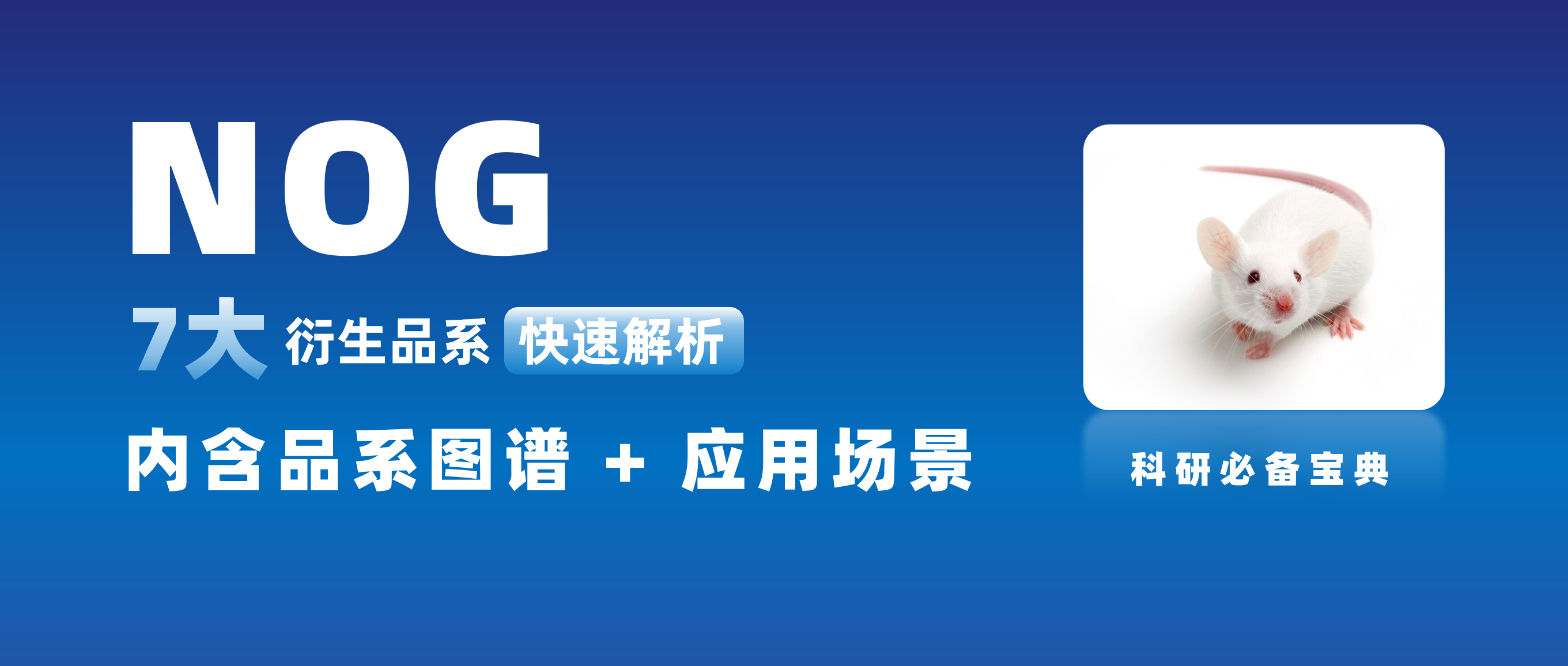
hIL-2 NOG Mice
412
NOD.Cg-PrkdcscidIl2rgtm1SugTg(CMV-IL2)4-2Jic/JicCrl
【CIEM正式授权】表达人源细胞因子IL-2
品系来源
hIL-2 NOG小鼠由日本中央实验动物研究所(CIEM)培育而成。CIEM Mamoru Ito实验室通过将CMV启动子控制的含有hIL-2 cDNA的DNA转基因载体显微注射到NOD/ShiJic-Il2rg小鼠的受精卵中,构建出Founder品系。该Founder再与NOG小鼠回交,建立了稳定的hIL-2 NOG小鼠。
✈ 2020年,维通利华从CIEM引入该品系。
☑ 拓展阅读:hIL-2 NOG小鼠与T细胞治疗实体瘤临床前模型
科研必备:不同NOG衍生品系的特点与应用场景解析
应用特性
研究用途:
- 可能是IL-2依赖性细胞系/肿瘤(包括一些血癌)移植(CDX/PDX)的优化模型。
- 是基于NK细胞功能的ADCC(antibody-dependent cellular-cytotoxicity)研究的体内研究模型。
- 可用来评估CAR-T细胞疗法实体瘤的杀伤活性。
- 可用于癌症、传染病、免疫学、再生医学、人体免疫系统移植等研究。
特性:
毛色:白化
除了NOG小鼠的特性外,还具备以下特性:
- 表达人源细胞因子IL-2。
- huHSC-CD34+移植hIL-2 NOG小鼠后人源NK细胞分化明显,CD56+NK细胞的数量是基础NOG小鼠的10倍以上。
- huHSC-CD34+移植hIL-2 NOG小鼠后产生的人源NK细胞,能够表达各种NK细胞受体,刺激后也能够产生颗粒酶A和穿孔素。
价格规格
| 品系代码 | 品系名称 | 日/周龄 | 性别 | VAF/SPF级 | Elite/SPF级 |
| 412 |
hIL-2 NOG
|
1-8周
|
雌
|
1260 |
*以上规格与价格自2025年1月1日至2025年12月31日有效。
应用文献
hIL-2 NOG Publications
|
Authors |
Year |
Paper Title |
Keywords |
|
Saillard, et al., |
2025 |
CD4 T cells,TCRT, NY-ESO-1, |
|
|
Young-Min Kim, et al. |
2025 |
Redirecting cytotoxic lymphocytes to breast cancer tumors via |
NK cell, T cell, G protein-coupled receptors (GPCRs), NK-92 cells, tumor |
|
Karlsson, Sah et al. |
2024 |
Patient-derived xenograft (PDX), tumor-infiltrating lymphocytes (TILs) , UM, tumor-reactive T lymphocytes (TRLs) |
|
|
Matteo Morotti, et al. |
2024 |
PGE2 inhibits TIL expansion by disrupting IL-2 signalling and mitochondrial function |
TIL, IL-2, CD8+ cytotoxic T lymphocyte |
|
Stecklum, Maria, et al. |
2024 |
Humanization of NOG mice and next generation NOG mouse strains |
NOG, next-generation NOG, HSC, check point inhibitors |
|
Colin Thalhofer, et al. |
2024 |
Tumor reactive CD8 TIL with an exhausted phenotype can be expanded and regress human tumors |
DP or DN TIL, PD-1, PDX |
|
Anaïs Jiménez-Reinoso, et al. |
2024 |
Adoptive cell therapy; bispecific T cell-engagers; cytotoxic CD4+ TIL; solid tumors; tumor-infiltrating lymphocytes |
|
|
Khoshtinat Nikkhoi S, et al. |
2024 |
HER2, CD16a, BiKE:E5C1, ADCC, laNK92, NK |
|
|
Elin M. V. Forsberg, et al. |
2023 |
CAR-TILs, HER2, PDX |
|
|
Julien Schmidt, et al. |
2023 |
adoptive cell therapy (ACT), TIL, Neoantigen |
|
|
Christensen, Pernille Kristine Fisker et al. |
2023 |
Sustaining the T-cell activity in xenografted psoriasis skin |
psoriasis, autoimmune disease |
|
MacLean S. Hall, et al. |
2022 |
TILs, Nivolumab, combined therapy, metastatic melanoma |
|
|
Liang, Frank et al. |
2022 |
MEK inhibition, colorectal liver metastases, tissue-resident memory T cells, tumor-infiltrating lymphocytes. |
|
|
Kudling, Tatiana V et al. |
2022 |
oncolytic virus, adenovirus, immunotherapy, interleukin 7 |
|
|
Arvind Natarajan, et al. |
2022 |
TILS |
|
|
Arnaud, M., Chiffelle, J., Genolet, R. et al. |
2021 |
Sensitive identification of neoantigens and cognate TCRs in human solid tumors |
ACT, TCRs |
|
Özcan Çınar, et al. |
2021 |
ACT, TCRs |
|
|
Somsundar V Muralidharan, et al. |
2020 |
ACT, melanoma |
|
|
T. Helleday |
2020 |
ACT, melanoma |
|
|
L.Ny, et al. |
2020 |
immunotherapy, melanoma, PDX |
|
|
Elin M. V. Forsberg, et al. |
2019 |
melanoma,HER2, CAR-T, ACT, |
|
|
Berglind O. Einarsdottir, et al. |
2018 |
melanoma, TILs,ACT |
|
|
Paul Volden, et al. |
2018 |
NK cell, ADCC, GvHD |
|
|
Henrik Jespersen, et al. |
2017 |
melanoma, IL-2, tumor-infiltrating T lymphocytes (TILs), adoptive T-cell transfer (ACT),humanized,PDX |
|
|
R.Ito, et al. |
2016 |
GvHD, CD8+ T cell,CD4+ T cell. |
|
|
Ikumi Katano, et al. |
2015 |
HSCs, humanized, NK cell,, ADCC |



















